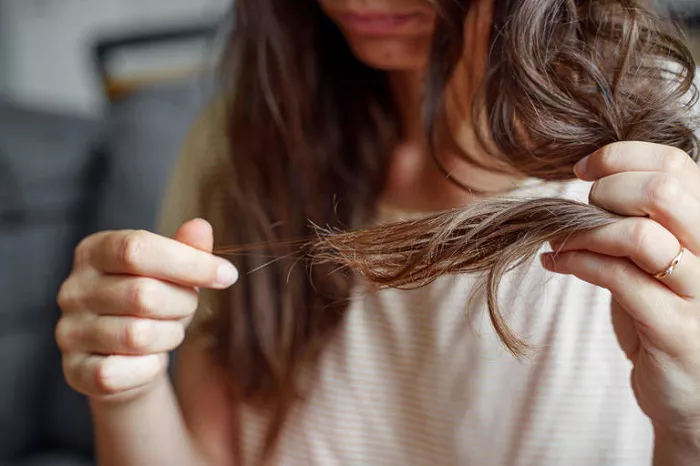Thinning hair is a concern for many, but recognizing the early warning signs and making strategic changes to your routine could make all the difference in restoring fullness and strength.
While genetics remain a primary factor, leading experts say lifestyle elements—such as stress, nutrition, hormonal changes, and scalp health—also play significant roles. “Hair loss can also be linked to the health of the scalp, as an imbalanced scalp can prevent hair growth,” explains Johan Hellström, CEO of Björn Axén and stylist to the Swedish royal family.
Fortunately, understanding the root causes of hair thinning and taking proactive steps may be easier than you think.
Understanding the Causes
According to Anabel Kingsley, trichologist and owner of Philip Kingsley, the most common forms of hair loss arise from two sources: excessive shedding and breakage.
“Telogen effluvium—essentially hair shedding—is often triggered by internal bodily disturbances such as illness, stress, postpartum hormonal shifts, or nutritional deficiencies,” Kingsley explains. Notably, the effects of such disturbances usually manifest six to twelve weeks after the triggering event, underscoring the importance of identifying potential causes retrospectively.
Breakage, on the other hand, often results from dry or damaged hair becoming weak and brittle. Overuse of heated styling tools, moisture depletion, and aggressive brushing can all lead to compromised strands.
Wil Fleeson, director at Rainbow Room, also points to hormonal fluctuations, certain medications, aging, and excessive styling as key contributors.
Spotting the First Signs
Although it’s normal to shed around 100 hairs a day, Kingsley advises that a noticeable increase may indicate an internal imbalance. Dr. Nora, a medical dermatologist at Rejuvenation Clinic, outlines the early signs: a widening hair part, receding hairline, finer texture, and slowed growth rate.
Prevention and Treatment
“The condition of your hair reflects your overall well-being,” says Hellström, noting that nutritional deficiencies often show up in the hair before other symptoms appear. This highlights the value of integrated hair health advice that includes dietary adjustments.
Celebrity stylist Jonathan Andrew echoes this sentiment: “Look at what you’re putting into your body, not just onto your hair.” He recommends increasing intake of omega-3s, vitamins, and nutrient-dense foods such as nuts and seeds, which are known to support growth and vitality.
For those already experiencing thinning, Kingsley suggests targeted treatments, including scalp-stimulating ingredients like methyl nicotinate, prescription drops, and even anti-androgen medications for hormone-related issues. Minoxidil, a well-known topical treatment, is also widely used by both men and women to promote growth.
Rethink Your Routine
Certain habits can unintentionally exacerbate thinning. Tight hairstyles can lead to traction alopecia, and bristle brushes may damage both scalp and hair. “If a style is giving you a headache, it’s too tight,” warns Kingsley. Instead, opt for brushes with flexible plastic prongs and be cautious with heat styling.
Overuse of heated tools is a major offender. “Heat not only flattens the follicle but can worsen existing damage, leading to further breakage,” Fleeson adds. Following proper hair care steps, such as minimizing heat exposure and being gentle with styling, can prevent avoidable thinning.
Styling Smarter
Certain hairstyles can help create the illusion of fuller hair. For men, a cropped cut can disguise thinning at the crown or hairline, while texture-boosting products like waxes and pastes can add volume. For women, short, layered bobs can enhance body and lift.
Color techniques like the “root smudge,” recommended by master stylist Katherine De Rozario, offer a cosmetic solution. This method blends roots with highlights to create a fuller-looking hairline while covering greys.
When it comes to managing thinning hair, a holistic approach works best. From nutritional improvements and medical treatments to mindful styling and smart hair care tips, small changes can lead to significant improvements. Recognizing the signs early and taking proactive steps could be the key to healthier, more voluminous hair.
Related Topics:
- How to Repair Damaged Natural Hair | No Cutting Required
- POM DROPS Revolutionizes Hairstyling with Innovative Pellet-Form Hair Clay
- How to Repair Heat Damaged Natural Hair Without Cutting It: Step-by-Step Guide


